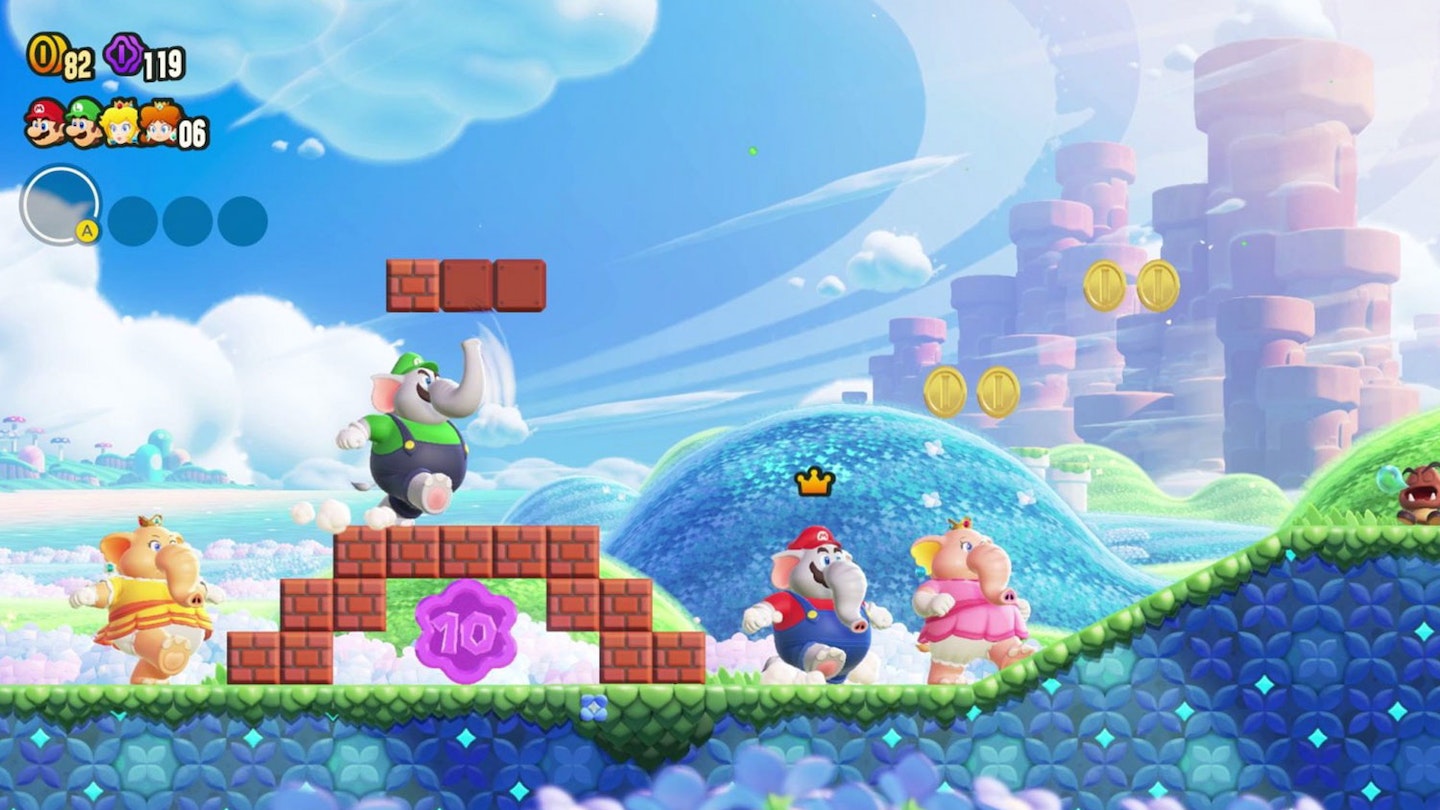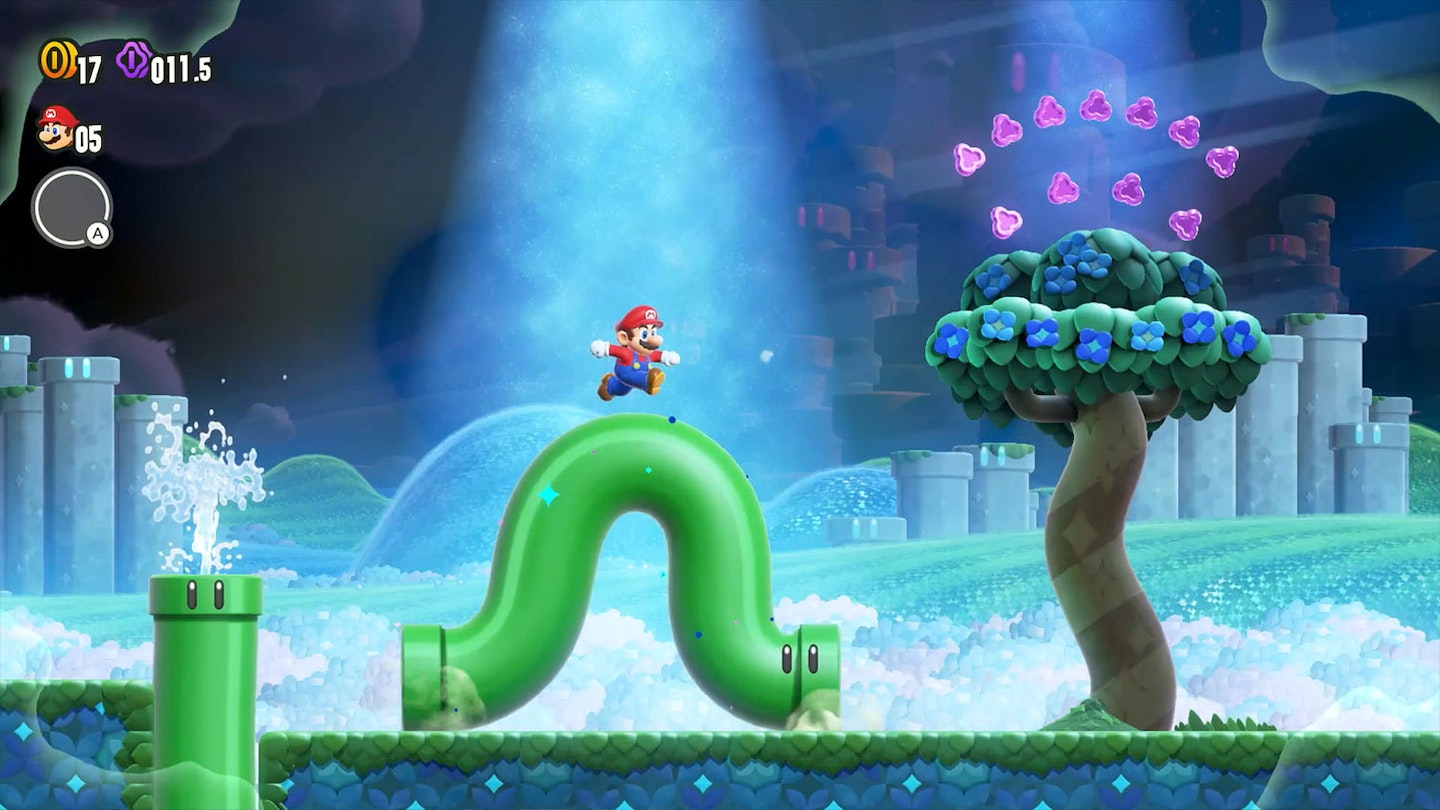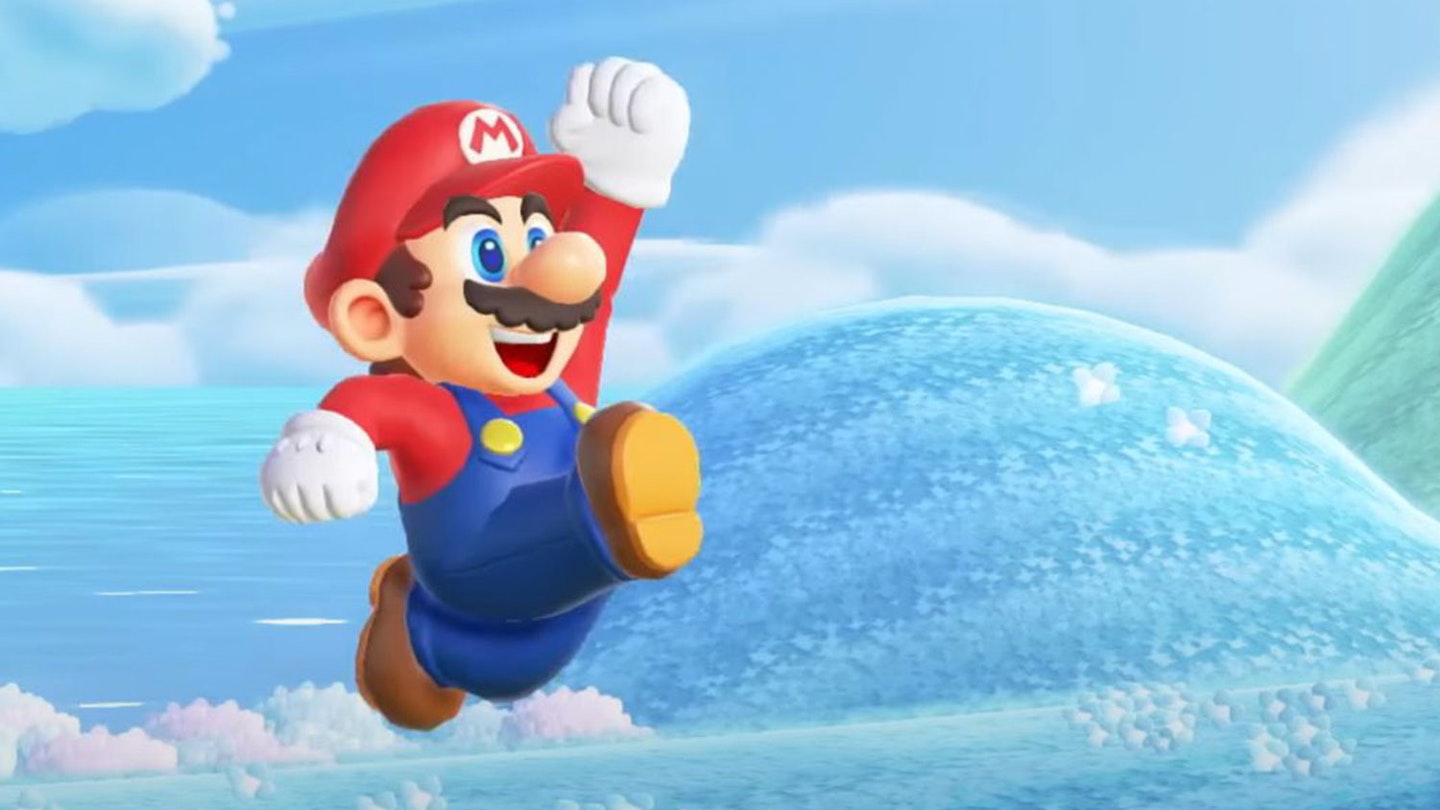Platforms: Nintendo Switch
It's been a long six years since Super Mario Odyssey, the last all-new adventure for Nintendo's vaunted plumber. Sure, we've had Super Mario 3D World with its impressive Bowser's Fury add-on since, and Super Mario Maker 2 too, but one was a Wii U remake and the other centred largely on creating and sharing your own Mario levels. A fresh slice of platforming perfection fresh from Nintendo's finest minds has been long overdue.
Thankfully – although almost predictably – Super Mario Bros. Wonder does not disappoint. Much as Odyssey evolved the series' 3D experience, so too does this refine and improve on just about every aspect of its 2D roots. With its top-down map linking playable courses, and those courses being exquisitely designed side-scrolling platforming challenges, Wonder most feels like a successor to the SNES' classic Super Mario World, but this eventually delves into far stranger territory.

The story is as light as ever though: Mario and friends are visiting the Flower Kingdom, neighbouring country of the Mushroom Kingdom, when Bowser steals a MacGuffin, transforms into a flying castle, and threatens to take over the world. Cue racing around six worlds, gathering key items – Wonder Seeds – and dispatching Bowser's underlings, before tackling the lethal lizard himself. It's not going to win Nintendo any awards for storytelling, but points for not having Bowser kidnap Princess Peach again.
Better still, you can play as Peach, or any of Mario's pals, in fact. That's not a first for the series by any stretch, but Wonder does boast the largest playable cast ever, with Mario himself backed up by Luigi, Peach, Princess Daisy, three flavours of Toad, four multicoloured Yoshis, and Nabbit, the thieving rabbit thing that's become an increasingly visible side character in the series since his first appearance back in 2012. While the humans and toads play identically, Yoshi and Nabbit have a unique twist – they don't take damage from enemies, but also won't be able to transform using the game's new power-up items. Invulnerability might sound like a big step up, but given some of those transformation items can be crucial for gathering each stage's collectibles, it can actually be quite the handicap. Plus, if you're navigating Wonder's worlds in multiplayer – the game supports up to four players – someone playing Yoshi can let others ride on their back, which is both adorable and another Super Mario World callback.
Wonder's whole approach to design, and how design impacts play, is deliriously delightful.
Perhaps the biggest gameplay shift though is the array of badges that can be equipped, each of which adds or tweaks an ability. These are different to traditional Mario power-ups in that they're not form changes, but rather modifiers to movement, which can drastically alter progression through levels. For example, the Dolphin Kick badges grants a surge of momentum when swimming, allowing you to better navigate underwater areas or chase down fast-moving foes, while the Parachute Cap introduces a slow glide from a jump, making wider gaps navigable. Other badges don't affect the character but rather the world, adding new blocks or earning extra coins for beating bad guys. Only one badge can be equipped at a time though, and can't be swapped mid-level, which adds a nice degree of replayability – especially as you may need to return to completed courses with a different badge’s ability to reach new areas or overcome obstacles.
Like all the best Mario games, Wonder starts off simply but rapidly gets much more challenging. The first few courses are almost literal walks in the park, strolling to the right of the Flower Kingdom's bucolic stages with nary a care in the world, just gently learning what new power-ups such as the Elephant form can do (barrel through obstacles, flick enemies away with a swing of the trunk, and spray plants with water, as it happens) or how badges work in practice. Pretty soon though, you'll see Nintendo's more sadistic tendencies creep in, with even some early levels in Pipe-Rock Plateau – the very first world – requiring multiple passes to scoop up every last collectible.

And despite its feverishly cartoonish appearance, Wonder may be one of the toughest games in Super Mario history for completionists to master. Not only are there the hundreds of pivotal Wonder Seeds to gather, but each main stage will have a trio of giant-sized Flower Coins to hunt down, many of them hidden. You'll even need to grab the highest point on every single one of the now-familiar course-ending flag poles if you want to truly 100% Wonder, a task that proves an increasingly gruelling test of platforming skills as the game advances.
Yet in typical Nintendo fashion, between those devilishly difficult moments are peppered flashes of pure joy. Sometimes it's just breathers, with levels literally called "Break Time" – short, fun tasks to earn a Wonder Seed – or cathartic challenges to rampage through a host of enemies in short order. In other cases, it's the must-pass levels that block off progress, but instead of demanding pixel-perfect platforming, they simply ask you to do something deranged, like outrun a Wiggler on roller skates. Or it might just be the way the game ferrets away little secrets, like hidden portals that lead to encounters with a wandering Captain Toad, or even subtle animation touches, with Goombas actually biting Mario and co. now, as Shigeru Miyamoto always wanted them to back in the series' 8-bit origins. Everywhere you look, Wonder is doing something to make you smile, and it makes the entire game feel infectiously happy.
Wonder's whole approach to design, and how design impacts play, is deliriously delightful too. The other new power-ups are weird enough, with drill-headed and water-bubble-firing forms to discover – the latter sort of an inversion of the long-standing fire flower, which also returns – but then there's a new item called a Wonder Flower that warps the entire reality of each level when collected. Pick one up, and you might find yourself running along the backs of a herd of stampeding Bulrushes, riding wriggling pipes, or in an entirely different environment altogether. Throw in dozens of entirely new enemy types, and Super Mario Bros. Wonder is one of the most inventive and imaginative entries in the series' history.
While fans who adored Odyssey are set to be kept waiting for Mario's next 3D outing, this return to the series' 2D roots proves nothing less than a delight. This is Nintendo operating at the peak of its powers – Super Mario Bros. Wonder more than lives up to its name.
